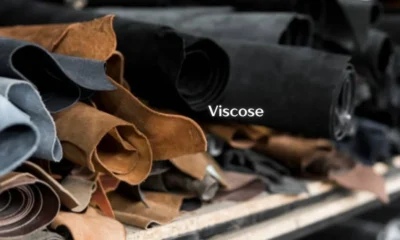Tech
content://cz.mobilesoft.appblock.fileprovider/cache/blank.html Explained: Safe Android File or Security Concern?

Introduction
If you’re an Android user, you’ve likely encountered various file paths and formats that make your head spin. One such example is content://cz.mobilesoft.appblock.fileprovider/cache/blank.html. At first glance, it might seem like just another obscure file path, but there’s more than meets the eye. Is this a safe option for your device or should it raise some red flags? Let’s dive into the world of Android file providers and uncover what this particular path really means for users like you!
Understanding File Providers on Android
Android file providers act as intermediaries that enable secure communication and file sharing between different apps. They allow one app to securely share files with another, without compromising the underlying file structure or data integrity.
When an application needs to access shared resources, a file provider helps manage permissions and keeps everything organized. This mechanism utilizes URIs that represent the shared files instead of direct paths on the device’s storage.
By using these URIs, developers can restrict access to sensitive files while still allowing other applications functionality like reading or writing content. This approach enhances security by ensuring that only authorized apps can interact with specific data sets.
Understanding how file providers operate is essential for both users and developers alike. It ensures efficient communication between applications while maintaining robust privacy standards within the Android ecosystem.
Pros of Using content://cz.mobilesoft.appblock.fileprovider/cache/blank.html
Using content://cz.mobilesoft.appblock.fileprovider/cache/blank.html comes with several advantages that can enhance user experience.
First, it promotes better data security. By utilizing file providers, apps can share specific files without exposing sensitive data. This controlled access limits the risk of unauthorized use.
Second, it improves performance and efficiency. The cache mechanism allows for faster loading times as frequently accessed resources are stored temporarily. Users enjoy a smoother app experience as a result.
Additionally, implementing this structure simplifies development processes. Developers can easily manage temporary files and optimize storage usage by leveraging Android’s built-in capabilities.
It enhances compatibility across different applications on the device. Sharing content through file providers ensures that various apps interact seamlessly while maintaining their independent functionalities.
Cons of Using content://cz.mobilesoft.appblock.fileprovider/cache/blank.html
Using content://cz.mobilesoft.appblock.fileprovider/cache/blank.html comes with notable drawbacks.
One major concern is the potential for data exposure. If sensitive information is inadvertently stored or accessed, it may lead to privacy issues.
Performance can also suffer. Accessing files through this URI might introduce delays, especially if the app isn’t optimized for handling such requests efficiently.
Compatibility issues are another drawback. Not all Android devices support file providers equally, which could result in an inconsistent user experience across different platforms.
Additionally, debugging can become a challenge when errors arise from file access via this method. Developers may find it hard to trace problems without clear error messages.
Relying heavily on this specific content provider could limit flexibility. It ties your application’s capabilities closely to one method of accessing files rather than exploring other potentially more efficient options.
Alternatives to content://cz.mobilesoft.appblock.fileprovider/cache/blank.html
When exploring alternatives to content://cz.mobilesoft.appblock.fileprovider/cache/blank.html, users might consider leveraging cloud storage solutions. Services like Google Drive or Dropbox offer seamless access and sharing capabilities without security concerns associated with local file providers.
Another option is to use dedicated file management apps. These tools often come equipped with enhanced features that ensure better organization and accessibility of files while maintaining privacy standards.
For temporary data storage, utilizing secure messaging apps can be beneficial. Apps like Signal or Telegram allow for sending sensitive information that self-destructs after a set time, ensuring privacy.
Employing virtual private networks (VPNs) adds an extra layer of security when accessing files online. This approach helps safeguard user data against potential breaches while browsing different platforms or using various applications.
Security Concerns and Risks
When it comes to using content://cz.mobilesoft.appblock.fileprovider/cache, security should be a top priority. This file provider can expose sensitive data if not handled properly.
Malicious apps can exploit vulnerabilities in the way permissions are managed. If your device lacks robust security measures, you might unknowingly share critical information with unauthorized parties.
Additionally, cached files may linger longer than intended. Users often overlook cache management, which could lead to outdated or potentially harmful data being accessible.
Relying solely on this method for storing personal files increases risk exposure. It’s essential to consider how and where your data is stored and accessed. Always stay vigilant about installed applications that have access to these file providers as they can act unpredictably.
Being informed about potential threats equips users better against unexpected breaches of their private information within Android environments.
Conclusion
Understanding content://cz.mobilesoft.appblock.fileprovider/cache/blank.html is essential for anyone navigating the Android ecosystem. This file path represents a specific resource managed by an app, hinting at how data is stored and accessed on your device.
File providers are integral to Android’s security model. They allow apps to share files without exposing sensitive information directly. Although they improve functionality, they can also create security risks if not managed carefully.
Utilizing content://cz.mobilesoft.appblock.fileprovider/cache/blank.html can offer advantages such as ease of access for developers and streamlined data sharing between applications. However, users must remain aware of the risks involved, including unauthorized access or mishandling of sensitive information.
Alternatives do exist for those wary of using this particular file provider. Various methods like direct file storage or cloud-based solutions can provide safer paths for managing data without compromising privacy.
Security remains a paramount concern when dealing with any form of file sharing in Android environments. Understanding the implications helps users make informed choices about their app interactions and overall device safety.
The landscape surrounding content://cz.mobilesoft.appblock.fileprovider/cache/blank.html presents both opportunities and challenges that every user should consider carefully.
Tech
Ciulioneros: Digital Creators of the Decentralized Age

Introduction to Ciulioneros
The digital world is evolving at an unprecedented pace, giving rise to a new wave of creators who harness the power of decentralization. Among them are the Ciulioneros a vibrant community that embodies innovation and creativity. These trailblazers are not just content producers; they’re visionaries reshaping how we interact with technology and each other.
In this era where traditional barriers are crumbling, Ciulioneros stands out as a beacon for aspiring artists, thinkers, and disruptors. They navigate the vast landscape of digital creation while embracing collaboration over competition. If you’ve ever wondered what it means to be part of something greater in the decentralized age, look no further than Ciulioneros. Let’s dive deeper into their unique approach and explore how they’re revolutionizing digital creation today!
The Rise of Digital Creators in the Decentralized Age
The landscape of content creation is transforming rapidly. Traditional platforms are being challenged by decentralized technologies, giving rise to a new breed of digital creators.
These innovators harness blockchain technology to maintain control over their work and earnings. It’s an empowering shift that places power in the hands of individuals rather than large corporations.
With tools like NFTs and decentralized finance, creators can monetize their art without intermediaries. This freedom allows for unique forms of expression previously stifled by conventional systems.
As communities form around these digital assets, collaboration flourishes. Artists connect globally, sharing ideas and resources with unprecedented ease.
The rise of ciulioneros exemplifies this movement—a collective redefining what it means to be a creator in the modern age. Embracing decentralization unlocks endless possibilities for those willing to explore them.
What sets Ciulioneros apart from other digital creators?
Ciulioneros stand out in the crowded digital creator space due to their innovative approach and community-driven ethos. They prioritize collaboration over competition, fostering a vibrant environment where creators can share ideas and resources freely.
Unlike traditional platforms, Ciulioneros embrace decentralized technology. This empowers creators with greater control over their content and earnings, eliminating middlemen who typically siphon off profit.
Their unique blend of artistic vision and technological prowess sets them apart. Members leverage blockchain tools to enhance creativity while ensuring transparency in transactions.
Moreover, Ciulioneros actively engages with its audience through interactive content and feedback loops. This relationship cultivates loyalty among followers who feel invested in the creators’ journeys.
Each member brings diverse skills to the table from graphic design to music production creating an eclectic mix that enriches the community as a whole.
The Impact of Ciulioneros on the Digital Landscape
Ciulioneros are reshaping the digital landscape in remarkable ways. They embody a new wave of content creators who leverage decentralized platforms to share their work directly with audiences.
This shift empowers individuals, eliminating the middlemen that traditionally dictated success and visibility. Creators can build authentic connections with their fans, fostering loyalty and engagement like never before.
By embracing innovative technologies such as blockchain, Ciulioneros enable transparent transactions. This not only protects artists’ rights but also ensures they receive fair compensation for their efforts.
Their influence extends beyond individual creators; it cultivates a vibrant ecosystem where collaboration flourishes. Communities rally around shared interests, leading to diverse content that reflects varied perspectives.
With this evolution comes an opportunity for innovation in monetization strategies. From NFTs to subscription models, Ciulioneros explore various avenues to sustain their creative endeavors while enriching the digital experience for everyone involved.
How to Become a Member of Ciulioneros?
Becoming a member of Ciulioneros is an exciting journey. First, visit the official Ciulioneros website. There, you’ll find detailed information about membership benefits.
Get to know their core principles and community vibe to ensure your creative path aligns with their shared mission. Understanding these will help you align your creative vision with theirs.
Afterward, fill out the application form provided on the site. Be genuine in sharing your artistic background and aspirations as a digital creator. Authenticity resonates deeply within this community.
Once submitted, engage actively on social media platforms where Ciulioneros members gather. This not only increases visibility but also helps build connections prior to acceptance.
Be patient during the selection process; it’s all part of finding like-minded creators who share your passion for decentralization and innovation in digital arts.
Interviews with Successful Ciulioneros Members
Members of Ciulioneros share inspiring stories that resonate with many aspiring digital creators. Their journeys are filled with challenges, triumphs, and invaluable lessons.
Take Maria, for instance. She started as a graphic designer but transformed her passion into a thriving online business through Ciulioneros’ collaborative community. Her creativity flourished alongside like-minded individuals who encouraged innovation.
Then there’s Leo, a musician who found his niche by leveraging blockchain technology to distribute his music directly to fans. His experience highlights the power of decentralization in empowering artists without intermediaries.
Another member, Aisha, emphasizes the importance of storytelling in her content creation process. She believes every piece should connect emotionally with audiences while maintaining authenticity.
These interviews unveil the essence of what it means to be part of Ciulioneros: support from fellow creators and limitless opportunities for growth in this dynamic digital landscape.
Conclusion: The Future of Digital Creation with Ciulioneros
The landscape of digital creation is evolving rapidly, and Ciulioneros stands at the forefront of this transformation. With a unique approach to decentralized content creation, they empower creators to take control of their work while building a community that fosters collaboration and innovation.
As more individuals seek independence in their creative endeavors, the role of groups like Ciulioneros will only grow. They not only inspire but also equip aspiring creators with tools and resources necessary for success in an increasingly crowded marketplace.
The future looks bright for those who join this movement. By embracing new technologies and championing originality over conformity, Ciulioneros paves the way for a richer digital ecosystem where creativity knows no bounds. As we move forward into this decentralized age, it’s clear that being part of Ciulioneros may just be what you need to thrive as a digital creator today and tomorrow.
Tech
Konversky: Smarter Engagement for the Modern Business

Introduction to Konversky – What it is and How it Works
In a world driven by digital speed, companies are racing to find smarter methods to engage and retain their audiences. Enter Konversky, the game-changing platform that redefines engagement strategies. Imagine harnessing cutting-edge technology to foster genuine interactions and elevate customer experiences all in one seamless tool. Whether you’re a small startup or an established enterprise, Konversky offers tailored solutions designed to meet your unique needs. Let’s dive into what makes this platform a must-have for modern companies aiming to enhance communication and build lasting relationships with their audiences.
The Benefits of Using Konversky for Businesses
Businesses today require tools that not only enhance communication but also foster genuine engagement. Konversky delivers on both fronts, making it an essential asset.
One of the standout benefits is its ability to streamline interactions. Users can connect with customers in real-time, creating a seamless experience that enhances satisfaction and loyalty.
Konversky delivers meaningful behavioral insights, helping brands shape personalized strategies that truly connect with their audience.
The platform’s versatility means it caters to various industries. Whether you’re in retail or tech, Konversky adapts to your unique needs effortlessly.
Another significant advantage is the cost-effectiveness of using this tool compared to traditional methods. Companies gain powerful outcomes while keeping costs well within reach.
Enhanced team collaboration fosters innovation within organizations. Unified teams enable faster responses and smoother shifts in direction when the business landscape changes.
Features and Tools Offered by Konversky
Konversky offers a robust suite of features tailored for modern businesses. Its intuitive dashboard provides real-time analytics, allowing teams to track engagement metrics seamlessly.
One standout tool is the AI-driven chat assistant, which personalizes conversations based on customer behavior. The result is a smoother journey for users and a noticeable lift in how often they take action.
The platform integrates easily with existing CRM systems, ensuring that data flows effortlessly between applications. Customizable templates allow businesses to craft targeted campaigns without any coding expertise.
Additionally, Konversky supports multi-channel communication, enabling companies to reach customers through various platforms be it email, social media, or SMS. With automated scheduling tools at your disposal, managing outreach becomes remarkably efficient and time-saving.
With such comprehensive offerings, Konversky truly empowers businesses to foster deeper relationships with their audience while streamlining operations effectively.
Real-Life Success Stories from Businesses Using Konversky
Businesses are seeing remarkable transformations with Konversky. One retail chain, struggling with customer engagement, integrated the platform and saw a 30% increase in repeat purchases within just three months. The personalized communication strategies led to stronger relationships with their clients.
A startup in the tech industry leveraged Konversky’s analytics tools to refine its marketing approach. The insights gained helped them target specific demographics more effectively, resulting in an impressive boost of 50% in lead generation.
Another success story comes from a local restaurant that used Konversky for real-time feedback during events. They quickly adapted their offerings based on customer input and achieved record attendance one weekend after implementing the tool.
These examples highlight how diverse businesses can tailor Konversky’s capabilities to fit their unique needs, driving growth and enhancing customer satisfaction across various sectors.
Tips for Implementing Konversky into Your Business Strategy
To effectively implement Konversky into your business strategy, begin with a clear understanding of your goals. Define what you want to achieve through enhanced engagement.
Next, involve your entire team in the onboarding process. Training sessions can help ensure everyone is on the same page and ready to leverage the platform’s capabilities.
Start small by integrating key features that align with immediate objectives. This allows for a smoother transition without overwhelming staff or customers.
Gather feedback regularly from both employees and clients. Their insights will guide adjustments and improvements in how you use Konversky.
Keep an eye on analytics provided by the tool. These metrics reveal what’s working and where you need to pivot for better results.
Comparison of Konversky with Other Engagement Tools
Konversky stands apart from conventional engagement platforms, offering distinct advantages that redefine interaction. Traditional platforms often focus solely on one aspect of customer interaction, while Konversky offers a holistic approach.
Many tools prioritize email marketing or social media management separately. However, Konversky integrates multiple channels seamlessly, allowing businesses to engage customers wherever they are.
User-friendliness is another area where Konversky shines. While some platforms can be overwhelming with complex features, the intuitive design of Konversky makes it accessible for users at all levels.
Additionally, analytics capabilities set Konversky apart. It provides real-time insights that help businesses adjust strategies quickly and effectively something many competitors lack in depth and clarity.
These distinctions show how choosing the right tool can significantly impact engagement efforts and overall business success.
Future Developments and Growth Plans for Konversky
Konversky is poised for exciting advancements in the coming years. The team behind the platform is dedicated to enhancing its capabilities, focusing on artificial intelligence and machine learning integration. This will enable businesses to engage more effectively with their audiences.
Upcoming features include advanced analytics tools that provide deeper insights into customer behavior. These enhancements aim to help companies tailor their communication strategies better than ever before.
Konversky aims to broaden its reach by connecting seamlessly with top CRM tools and leading social networks. This seamless connectivity will allow users to manage all engagement efforts from a single interface.
User feedback plays a crucial role in shaping development priorities. Regular updates based on client suggestions ensure the platform evolves alongside market needs, making it an indispensable tool for any modern business looking to thrive in a competitive landscape.
Conclusion: Why Every Modern Business Needs Konversky?
As the business landscape continues to evolve, staying ahead of the competition is essential. Konversky offers a unique blend of engagement tools tailored for modern businesses. With its innovative approach, it helps companies build stronger connections with their customers.
Adopting Konversky can transform how your business interacts with clients and prospects. The platform’s features streamline communication and enhance customer experience, making it easier for brands to understand their audience’s needs.
Businesses that have integrated Konversky into their strategy report increased satisfaction rates and higher conversion levels. This tool is not just about managing relationships; it’s about elevating them to new heights.
In an age where consumer preferences shift rapidly, having a reliable partner like Konversky can make all the difference. Embracing such technology is no longer a luxury; it’s a necessity for those looking to thrive in today’s competitive market. Adopting smarter engagement strategies will prepare any organization for future challenges making Konversky’s an invaluable asset in achieving long-term success.
Tech
About Qushvolpix brand: Smart Minimalism in Wearable Design

Introduction to Qushvolpix brand
Welcome to the world of Qushvolpix, where innovation meets elegance in wearable design. This brand redefines what it means to wear technology by merging style with functionality. As we dive into the essence of about qushvolpix brand, you’ll discover how its unique approach brings smart minimalism to life. From sleek designs that complement any outfit to cutting-edge features that enhance daily living, there’s a lot more than meets the eye with this exciting brand. Get ready to explore what makes Qushvolpix a standout choice for those who appreciate both aesthetics and practicality in their everyday accessories.
The Inspiration Behind the Brand’s Name and Concept
The name Qushvolpix is a blend of creativity and intention. It embodies cutting-edge innovation while seamlessly blending in a touch of elegance and style. Each syllable resonates with a vision rooted in modernity.
At its core, the brand reflects the idea of merging function with aesthetics. The concept draws inspiration from nature’s simplicity, emphasizing that less can indeed be more.
Qushvolpix aims to foster connections between wearers and their environment through thoughtful design choices. Every piece tells a story—one that encourages self-expression without overwhelming complexity.
This philosophy extends beyond mere fashion; it embodies an ethos where technology meets artistry seamlessly. By focusing on what truly matters, Qushvolpix invites individuals to embrace their unique journeys while staying effortlessly stylish.
Embracing Smart Minimalism: Qushvolpix’s Design Philosophy
Qushvolpix stands out with its commitment to smart minimalism. This design philosophy revolves around simplicity without sacrificing functionality. Each piece is a testament to clean lines and thoughtful aesthetics.
The brand believes that less truly can be more. By stripping away the unnecessary, Qushvolpix focuses on what matters most—crafted elegance and intuitive usability. The result? Wearable designs that seamlessly integrate into everyday life.
Color palettes are often muted, allowing users’ personalities to shine through rather than overshadowing them. Materials selected for each product ensure durability while maintaining a light touch.
Every curve and angle has purpose, reflecting an understanding of human interaction with wearable technology. With this approach, Qushvolpix encourages individuals to embrace their own style in harmony with the modern world surrounding them.
The Impact of Technology in Qushvolpix Products
Technology serves as a cornerstone in the development of Qushvolpix’s products. Each piece is designed with cutting-edge features that enhance user experience.
Integrating smart technology into wearable design allows for seamless connectivity and functionality. Wearers can easily track their health metrics or manage notifications without compromising style.
Moreover, the use of advanced materials ensures durability while maintaining an aesthetic appeal. Lightweight fabrics and innovative designs contribute to comfort during daily wear.
Qushvolpix also prioritizes user-friendliness in its tech integration. Simplified interfaces make it accessible to everyone, regardless of tech-savviness.
As technology evolves, so does Qushvolpix’s approach—constantly innovating to stay ahead of trends while delivering products that resonate with modern lifestyles.
Qushvolpix’s Product Line and Features
Qushvolpix offers a diverse product line that seamlessly blends style and function. Each piece reflects the brand’s commitment to smart minimalism, ensuring that every detail serves a purpose.
The smartwatch lineup distinguishes itself through its modern aesthetics and user-friendly functionality. Users can track fitness metrics while enjoying notifications without clutter or distraction.
Another highlight is their range of accessories, which are designed to complement any outfit. The materials used are lightweight yet durable, making them perfect for everyday wear.
For those seeking customization, Qushvolpix provides options to personalize features based on individual preference. This adaptability enhances user experience without compromising elegance.
Every product showcases innovative technology integrated into minimalist aesthetics. With Qushvolpix, functionality meets fashion in an effortless manner.
Sustainability and Ethical Practices in Qushvolpix
Qushvolpix stands out not just for its design but also for its commitment to sustainability. The brand prioritizes eco-friendly materials, ensuring that each product reflects a deeper respect for the planet.
Their sourcing process emphasizes renewable resources. This careful selection reduces environmental impact while maintaining high quality. Qushvolpix actively seeks to minimize waste across its manufacturing processes.
In addition, ethical labor practices are at the forefront of their operations. Transparency is key; customers can trust that every item is produced under fair working conditions.
By embracing a holistic approach, Qushvolpix demonstrates that style and responsibility can coexist beautifully. Each piece embodies a philosophy where aesthetics meet awareness, making it easy for consumers to make conscious choices without sacrificing elegance or functionality.
Customer Reviews and Feedback on Qushvolpix Products
Customer feedback on Qushvolpix products has been overwhelmingly positive. Users appreciate the seamless blend of functionality and style in each piece.
Many customers highlight the comfort and lightweight nature of the wearables. They often mention how effortlessly these devices fit into their daily lives, reinforcing the brand’s commitment to smart minimalism.
The innovative technology integrated into Qushvolpix items garners praise as well. Buyers frequently comment on how user-friendly features enhance their experience without overwhelming them with complexity.
Moreover, feedback highlights an increasing admiration for the brand’s commitment to ethical standards. Shoppers feel good knowing that they are supporting a brand focused on sustainability while enjoying high-quality design.
Social media buzz also showcases real-life applications of Qushvolpix products. Customers love sharing photos and experiences, further establishing a vibrant community around this unique brand.
Collaborations and Future Plans for the Brand
Qushvolpix is all about innovation and collaboration. The brand actively seeks partnerships with like-minded creators in fashion, technology, and art. These partnerships frequently result in innovative designs that redefine the limits of wearable technology.
Exciting projects are on the horizon. Qushvolpix aims to team up with emerging designers who share its vision of smart minimalism. Such alliances promise fresh perspectives and innovative ideas that resonate with a diverse audience.
Looking into the future, Qushvolpix plans to expand its product line while staying true to its core values. More sustainable materials will be incorporated across various collections, aligning perfectly with eco-conscious consumer demands.
Engagement with customers also plays a significant role in shaping future offerings. Listening to feedback helps ensure that each new launch meets their evolving needs and desires within the realm of stylish functionality.
Conclusion
Qushvolpix stands as a beacon of smart minimalism in the wearable tech market. With a name that encapsulates creativity and innovation, the brand is dedicated to crafting products that blend seamlessly into everyday life. Their design philosophy centers on simplicity without sacrificing functionality, ensuring users can enjoy cutting-edge technology at their fingertips.
The impact of technology on about qushvolpix brand offerings cannot be overstated. Each product showcases advanced features while maintaining an aesthetic appeal that aligns perfectly with modern lifestyles. This commitment to high-quality craftsmanship extends beyond just looks; it encompasses sustainability and ethical practices central to the brand’s mission.
Customer feedback reflects satisfaction across various demographics, highlighting not only product performance but also the emotional resonance these items create. Looking ahead, Qushvolpix aims to broaden its reach through exciting collaborations and innovative new releases.
As awareness grows around minimalist principles and sustainable choices in consumer electronics, Qushvolpix positions itself as an influential player committed to enhancing lives through thoughtful design. Embracing this ethos helps consumers connect more deeply with their devices while encouraging responsible consumption—an essential aspect of today’s world.
-

 Business3 months ago
Business3 months agoSEO Experts at Garage2Global: Boosting Business Rankings Fast
-

 Entertainment3 months ago
Entertainment3 months agoPlayers Infoguide Dmgconselistas: Dominate Every Match with Real-Time Metrics and Pro-Level Game Analysis
-

 Entertainment3 months ago
Entertainment3 months agoGoonierne 2: A Surreal Web Game Blurring Fact, Fiction, and Digital Folklore
-

 General3 months ago
General3 months agoSerialpressit com: The Simple, Smart Blogging Hub That’s Winning Readers and Writers in 2025
-

 Food & Drinks3 months ago
Food & Drinks3 months agoCalamariere: A Flavorful Journey Through Tradition
-

 Fashion3 months ago
Fashion3 months agoViscose Explained: Fabric Making, Applications & Sustainability
-

 Entertainment3 months ago
Entertainment3 months agoPremiumindo69: Explore a Digital Hub of Streaming, Gaming, and Exclusive Features
-

 General3 months ago
General3 months agoWhy SBXHRL Is the Backbone of Modern Blogging



